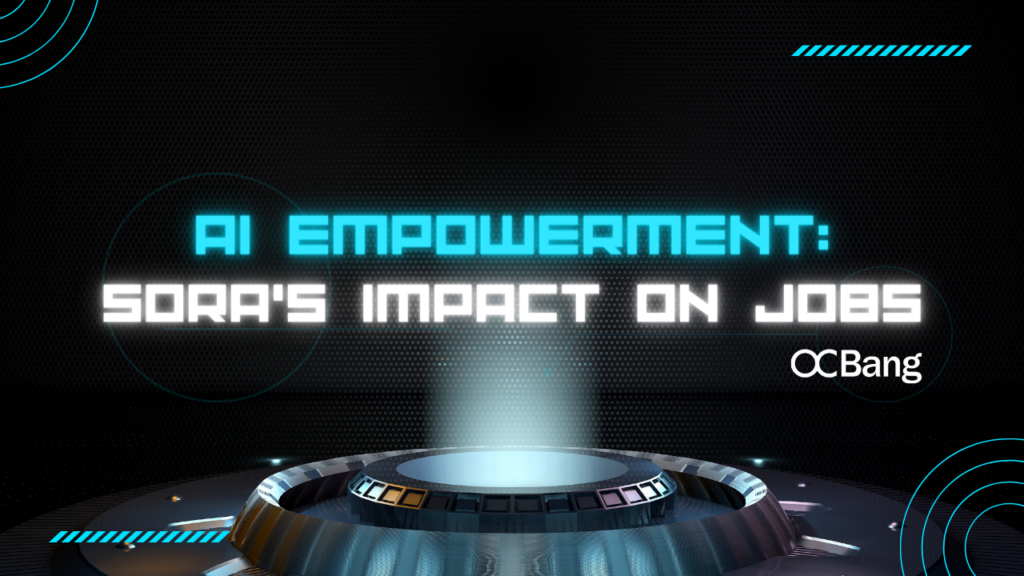AI Empowerment: Sora's Impact on Jobs
OpenAI’s recent unveiling of Sora, its groundbreaking video generation model, has sparked excitement and speculation across industries. Sora represents a significant leap forward in AI-driven content creation, promising to reshape how we produce and consume visual media. However, as we marvel at Sora’s capabilities, it’s crucial to pause and reflect on the implications of this technological marvel.
Sora’s Emergence: A New Milestone in AI
Sora’s arrival marks a new milestone in the AI landscape, pushing the boundaries of what was previously thought possible in video generation. Unlike its predecessors, Sora boasts remarkable spatial simulation capabilities, bringing virtual worlds to life with unprecedented realism. By treating video frames as sequences of patches, Sora can seamlessly weave together text and images to create contextually relevant and visually coherent videos.
However, while Sora represents a remarkable achievement, it is not without its limitations. Challenges such as overfitting and underfitting persist, leading to occasional inaccuracies in generated content. Moreover, Sora’s reliance on existing data sources raises concerns about originality and creativity in AI-generated work.
Navigating the Opportunities and Challenges
As we look to the future, it’s essential to consider the opportunities and challenges that lie ahead for Sora and similar AI technologies. Furthermore, as we embrace the potential of AI in creative industries, we must also grapple with fundamental questions about ownership, authenticity, and the role of human creativity. The democratization of content creation through AI has the potential to revolutionize how we produce and consume media. Still, it also raises complex ethical and practical concerns that demand careful consideration.
How Will Sora Influence Different Industries
OpenAI’s Sora emerges as a transformative force, reshaping industries with its innovative text-to-video capabilities. While concerns about job displacement linger, Sora’s true potential lies in augmenting human creativity rather than outright replacement.
In the traditional film and television industry, Sora streamlines production processes, reducing costs and time constraints. Directors and post-production personnel benefit most, utilizing Sora for holistic project management and creative decision-making. Moreover, Sora’s introduction disrupts conventional practices in the advertising industry, offering cost-effective alternatives to traditional video production and impacting marketing strategies. The short video industry experiences a surge in creativity with Sora’s advent, empowering content creators and educational institutions alike.
Despite concerns about job displacement, Sora enhances efficiency and productivity, prompting professionals to adapt and upskill. Investments in education and training programs integrating AI will be crucial for navigating these transformations, ensuring a competitive workforce. In conclusion, Sora offers unprecedented possibilities for creative expression, reshaping content creation in the AI era through collaboration and innovation.
Job Displacement Concerns
One of the primary concerns surrounding AI like Sora is the fear of job displacement. Professionals across various creative fields, from video editing to graphic design, worry that AI-driven automation could render their skills obsolete. The prospect of algorithms replacing human creativity and expertise is understandably unsettling, prompting anxieties about the future of employment in these industries.
Unlocking New Possibilities
However, Sora’s integration offers new vistas of creativity. Picture a scenario where a filmmaker collaborates with Sora to bring their vision to life. While AI handles repetitive tasks such as scene transitions or color grading, the filmmaker focuses on crafting compelling narratives and emotive performances. This symbiotic relationship between human creativity and AI-driven automation can lead to the production of higher-quality content in less time.
Reshaping Job Roles and Skillsets
Rather than obviating roles outright, Sora’s integration may reshape creative professions. As certain tasks become automated, professionals have the opportunity to adapt and evolve their skill sets. For instance, video editors may transition to become creative directors, leveraging AI to streamline workflows and amplify their artistic vision.
Finding a Balance: AI as a Tool for Creativity
Ultimately, the true promise of Sora lies not in its ability to replace human creativity but in its capacity to augment and enhance it. By leveraging AI as a tool for creativity, we can unlock new possibilities and streamline the creative process. From reducing production costs to accelerating content creation, Sora has the potential to revolutionize the way we approach visual storytelling.
In conclusion, the emergence of Sora heralds a new era of creativity and possibility in the AI landscape. By embracing opportunities while addressing challenges, we can harness the full potential of AI to redefine how we create, consume, and appreciate visual media.
Want to learn more? Check our website and feel free to email us https://www.ocbridge.ai



